Near the Black Sea
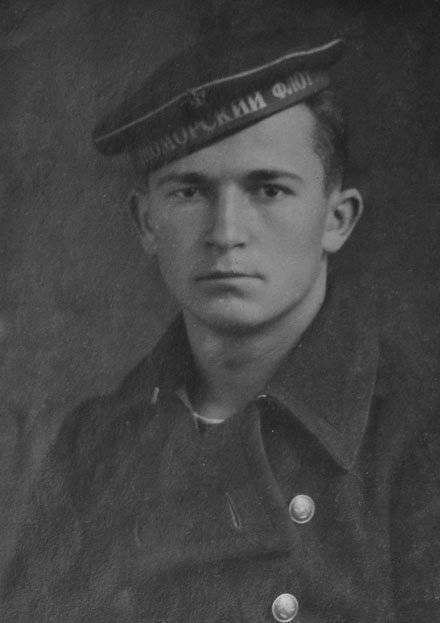
The news of the start of the war caught Viktor Bely in Odessa, where he was preparing to enter the medical faculty of Odessa University. Having collected the documents, the young man returned to his native Kherson, and in August of the 41st he was drafted into the army. He was 19 years old, he graduated from a ten-year school, was perfectly healthy, but because the military enlistment office sent Viktor to a school that trained naval shooters-radio operators aviation. In May of the 42nd, naval officer Bely arrived to serve in the 60th separate air force squadron of the Black Sea Fleet, however, having barely heard that the Air Force headquarters fleet forms a parachute assault company, wrote a transfer application, and already in June was enrolled in paratroopers.
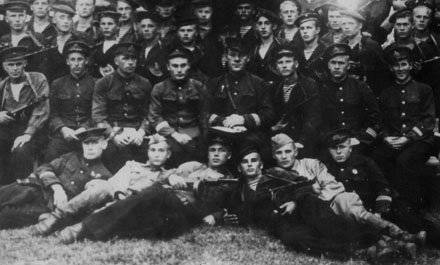
Capt. Orlov, former chief of the paratrooper service of the 32 Fighter Aviation Regiment, commanded the Air Forces of the Black Sea Fleet of the Black Sea Fleet. In September of the 41, he was preparing the first group of naval paratroopers recruited from the Black Sea Fleet air forces for the raid. Then, before the landing of a large naval assault force near Odessa near Grigorievka, on the night of September 22 1941, a group of 23 paratroopers under the command of sergeant Kuznetsov parachuted from the TB-3 aircraft near the village of Shitsli, where the Romanian regiment was supposedly headquartered.
Two weeks of training, allotted for training in amphibious and sabotage wisdom, turned out to be not enough, and the group suffered heavy losses already upon landing - several paratroopers sank in the estuary, one was immediately captured. And yet, with a dozen soldiers armed with machine guns, grenades and daggers, they managed to assemble into a combat group, attacked the Romanian headquarters, throwing grenades at the headquarters dugout. After interrupting the lines of communication and successfully operating from ambushes, the paratroopers disorganized the near rear of the Romanian defense at the time of the landing of the amphibious assault forces.
This experience of sabotage work was recognized as very successful, and even an attempt was made to form at Kachin airfield near Sevastopol a separate parachute unit in the fleet's marines, called the “017 group”. When Sevastopol was besieged, the 017 fighters used to defend particularly important objects. For the most part, the paratroopers of this detachment died during the fighting at Cape Chersonese in July 1942. The few surviving fighters of the 017 group were evacuated by sea to the Caucasian coast, and they were sent to the disposal of Captain Orlov, who formed a separate naval parachute company.
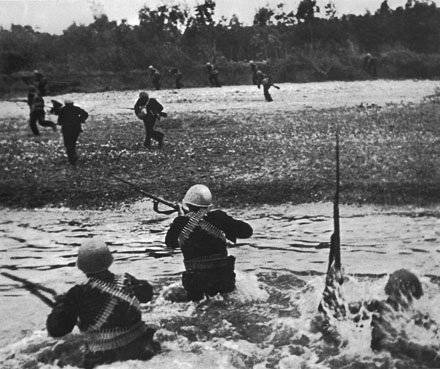
The former commander of the paratrooper service of the 40 air regiment, Captain Desyatnikov, an experienced paratrooper who had a pre-war experience in the special paratrooper brigade, became deputy to the commander of the naval paratroopers Orlov. The paratroop training with the personnel of the company was conducted by the former lieutenant A. A. Tarutin of the similar service in the 5 Guards Aviation Regiment. Combat and tactical training of the Black Sea paratroopers involved Senior Lieutenant G. I. Marushchak, who owned many types weapons.
Under the leadership of these officers, the personnel of the company - 160 fighters - underwent extensive training. Together with the others, Viktor Bely studied hand-to-hand combat, methods of removing sentries, orienteering, shooting, throwing grenades, and disruptive work. Company Red Navy men made day and night training parachute jumps, after which they were driven by difficult mountain routes, which were designed so that they had to force water obstacles. This long and exhausting preparation together with a certain amount of luck helped Viktor Bely survive when he had to act in a real combat situation.
In October 1942, paratroopers from the Black Sea landing company made a successful sabotage at the Maikop airfield, destroying 13 on the airfield and damaging 11 German aircraft from 39 based there. For this operation, 42 fighters were selected, among whom Viktor Bely was not included. His turn came in February 1943, when the naval paratroopers were assigned a new task - a large landing force was planned in the Novorossiysk area, and paratroopers Captain Orlov had a special role in this operation.
According to the plan of the headquarters, naval landings landed in several places along the coast, which were assigned an auxiliary role, and the main blow was supposed to be delivered on February 4, 1943 in the area of the village of South Ozereyka, where a marine brigade, reinforced by 30 American tanks M-3 "Stuart" received by Lend-Lease. A dozen of these tanks and two vehicles with different equipment were loaded onto boulders of the “binder” type, which transported the tugboats “Alupka”, “Gelendzhik” and “Yalta”. Fire support for the landing was provided by a squadron consisting of the cruiser Krasny Krym and Krasny Kavkaz, three destroyers and three gunboats: Krasny Adzharistan, Krasnaya Abkhazia and Krasnaya Gruziya. Landing boats were supposed to be boats of the "sea hunter" type MO-4.
In the rear areas of the coastal defensive line at South Ozereyka, they planned to drop a parachute assault force, which was to smash the headquarters, blow up bridges, cut communication lines, block the reinforcements approach to the coast.
It was originally planned to land 80 paratroopers from three PS-48 airplanes and the TB-3 bomber 45 minutes before the landing of an amphibious assault force under the South Ozerieyka. However, one of the aircraft could not reach the target and returned to the airfield with the landing force on board. At around 3 in the morning hours of February 4 1943 of the year on the slope of Zhen-gora, between the villages of Vasilyevka and Glebovka, 57 fighters landed, divided into three battle groups.
Shortly before the landing of the assault, Soviet bombers struck a powerful bombing strike in the landing area, and with special incendiary bombs caused several strong fires that served as landmarks for the paratroopers. After a heavy bombardment, the Germans, even noticing the domes of parachutes, could not immediately organize themselves, and therefore the landing of the paratroopers occurred with minimal losses. Even the death of the commander of one of the groups, Lieutenant Solovyov, who crashed upon landing, did not confuse the plans - the group was headed by Junior Lieutenant Chmyga, who led the people into battle.
The targets of the assault groups were located in the villages of Vasilyevka and Glebovka, located on different sides of Zhenya Gora. Sailor Viktor Belyy landed in the squad of 24 paratroopers, commanded by Lieutenant Kuzmin. Immediately getting involved in the battle, they suppressed several firing points, blew up two bridges, cut the lines of communication. Having completed the first part of the assignment, Kuzmin led his men to Vasilyevka to help Chmyga's group, which was to destroy the headquarters of the 10 Romanian division. However, it turned out that the headquarters was in Glebovka, and in Vasilyevka there was a strong garrison that met the paratroopers with heavy fire. Both groups of troops landed on the outskirts of the village, waiting for the marines to approach, who, judging by the sounds coming from the coast, had already landed and fought, trying to break into the enemy’s defensive orders.
However, until morning reinforcements did not come, the situation was difficult. The Germans threw a mountain rifle battalion against the paratroopers, supported by the Romanian field artillery and units of the 10 Romanian division. Cleverly maneuvering in the folds of the terrain, suffering losses, the paratroopers lasted a whole day, but when the enemy pulled up the tanks, they were forced to retreat.
Gathering fighters from both groups, Lieutenant Kuzmin led them along the channel of the Ozereyka River to the coast, from where the sounds of battle could be heard, but coming to the landing site of the amphibious assault, they saw a picture of a terrible defeat: submerged barges with warmed tanks near the coast, several of wounded "Stuarts »Stood on the beach dotted with the bodies of the dead. Realizing that the landing from the sea failed, the commander decided to leave for the east. During the night, they reached Glebovka and attacked the garrison, which the day before had already been taken over from the third sabotage group of naval paratroopers who had defeated the German artillery battery in Glebovka.
In a short hand-to-hand fight, Kuzmin’s fighters broke through, went to the Abrau-Durso area, reaching the point on the coast, from where they were to be taken by boats. But they didn’t find anyone at the appointed place - even 6 February boats that came to the pebbled beach of Durso from Gelendzhik, took 23 marine paratroopers and 2 paratroopers who had strayed from Kuzmin’s group, and went back to base.
Having no radio contact with the headquarters, the paratroopers did not know that, at the landing site, the pennants were dropped from the aircraft, in which they were instructed to move to Myskhako. Those paratroopers who picked up these pennants, February 10 were picked up by boats and taken to Gelendzhik.
Not waiting for the boats, the remnants of Lieutenant Kuzmin's group decided to make their way up the mountains to the front line. In order to knock the Germans off the trail, who organized raids with dogs, they tried to follow the beds of streams and mountain rivers. The paratroopers had food with them for five days, and they had to spend almost a month in the rear of the Germans.
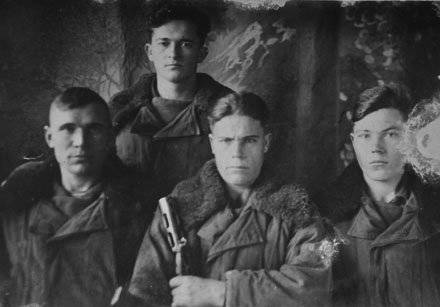
On the 23 day of their wanderings in the mountains, the paratroopers found partisans. By that time, only four were left from their group. In the detachment, they met the commander of one of the landing groups of Junior Lieutenant Chmyga and a dozen marines who had survived the defeat. After a short rest and otvivshis, paratroopers and marines decided to cross the front line. On the advice of the partisans divided into three fives. Lieutenant Chmyga went fifth with Viktor Bely and his three comrades. Marines made their way through difficult paths, and in his memoirs, Victor Bely notes that he does not know whether they came to ours or not.
The five paratroopers for a breakthrough to their own decided to take advantage of the fact that they actively used our prisoners during the excavation work in the front line. Going to the front of the enemy, under the town of Kabardinka, they captured a German, clearly explaining to him that they had nothing to lose and that they had to play the role of a guard leading the prisoners to work. The risk game was quite successful - under the guise of a working team, which their prisoner “escorted”, the saboteurs reached the front line of the German trenches ... And then the question arose - what to do with the German prisoner? It was too difficult to carry with me, it was too dangerous to leave alive, but no one was particularly eager to dirty his hands with blood. They decided to “throw in matches” again, and the German finished off with a dagger the one who pulled out a short match.
Having gone to the neutral zone, we crawled to our trenches. Getting closer began to shout: "Do not shoot! Their!". They were let into the trenches and immediately surrendered to the special forces, to whom the aliens “from the other side” seemed very suspicious types - after all, the paratroopers did not take any documents with them for the mission, and could not certify their personalities. A special department of the unit that defended the sector of the front where the transition was carried out, sent a request to the fleet air force headquarters. There, all members of Kuzmin’s group were considered missing, and therefore those who crossed the front line were immediately requested by the naval air force commander, Major General Aviation V.V. Yermachenkov. The children were washed, fed, dressed up and immediately taken to Sukhumi, to the headquarters. There, the general talked with them, thanked them for their service, and as a souvenir they were photographed together.
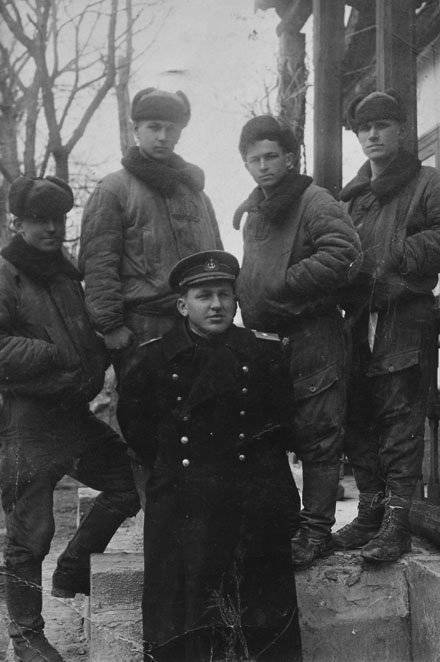
After the landing under the Southern Ozereyka, death still twice came very close to Victor White. In January, 44, during the landing of troops near Kerch, he almost drowned in the sea - a sailor of the boat saved him, who managed to pick up the sinking paratrooper with a hook and pulled Victor out of the water.
After the war, after graduating from the Leningrad Higher Naval School, Viktor Nikolaevich Bely returned to the Black Sea Fleet, served as an artillery officer in a cruiser squadron, and by the year 1955 made an enviable career, becoming an assistant to the flagship artilleryman. The guardian angel stretched its wings over him again when, in the fall of 1955, Viktor Bely set off on a training trip with firing on board the battleship Novorossiysk, where the squadron headquarters was located. From the march the battleship returned to the evening of October 28, on the eve of the centenary of the defense of Sevastopol. An assistant to the flagship gunner went to the fleet headquarters to report on the shooting, and at ten o'clock in the evening he came home to his wife and children. At half past one on the battleship, a terrible explosion struck, the real cause of which could not be established until now. As a result of this disaster, 604 people died.
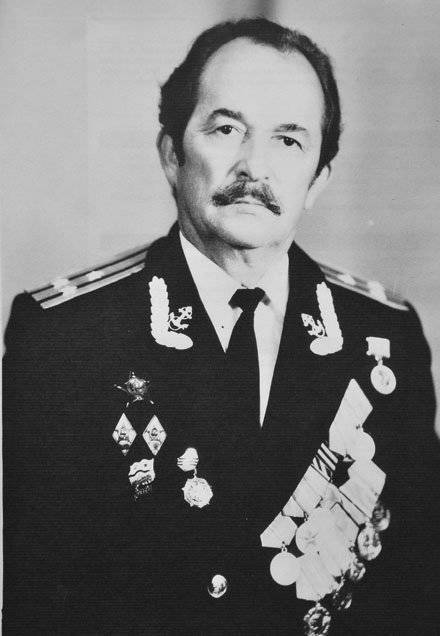
After retiring as captain of the 1 rank, Viktor Nikolaevich moved to Kolomna in 1974.
Information